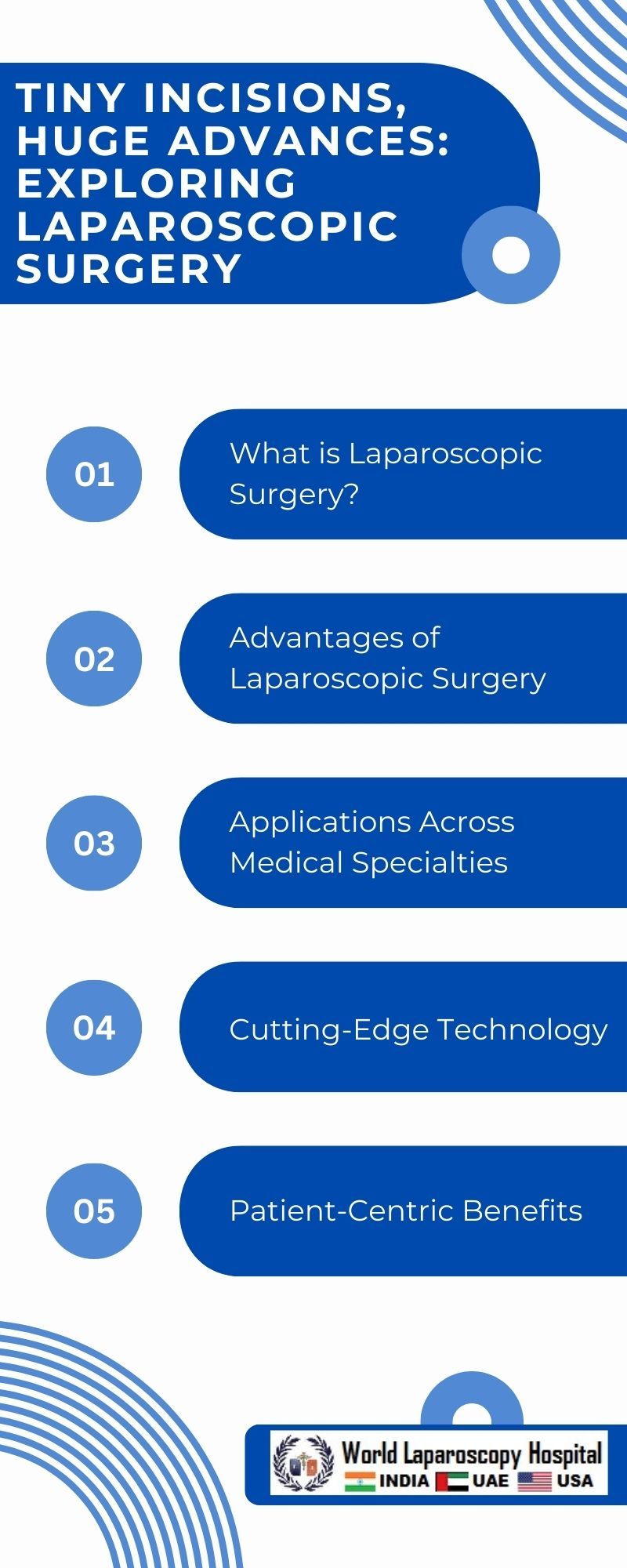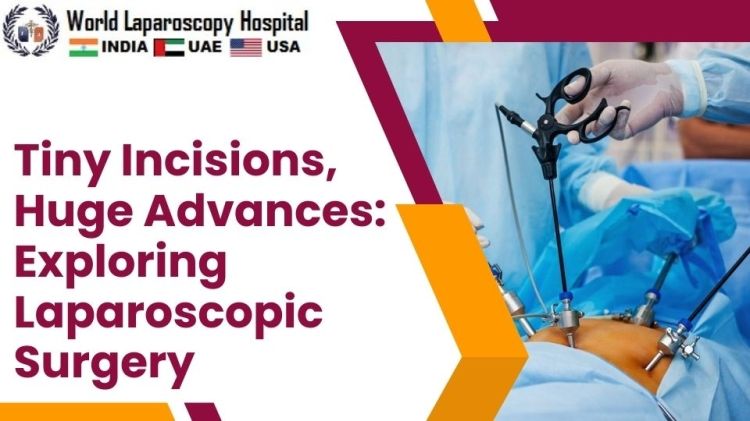Tiny Incisions, Huge Advances: Exploring Laparoscopic Surgery
Introduction
In the ever-evolving landscape of medical science, few innovations have had as profound an impact as laparoscopic surgery. This revolutionary approach to surgical procedures has transformed the way we perceive and conduct operations across various medical disciplines. By replacing traditional open surgeries with minimally invasive techniques, laparoscopic surgery has not only reduced patient trauma but has also ushered in a new era of precision, efficiency, and faster recovery times.

Understanding the Basics of Laparoscopic Surgery
Laparoscopy: A Surgical Revolution
Laparoscopic surgery, often referred to as minimally invasive surgery or keyhole surgery, involves performing operations through small incisions using a specialized instrument called a laparoscope. This slender tube, equipped with a light source and camera, allows surgeons to visualize the internal organs on a monitor, guiding them through the procedure with unparalleled clarity.
The Instrumentation of Precision
The laparoscope is just one component of the intricate set of instruments employed in laparoscopic surgery. Trocars, long, thin tubes, serve as entry points for these instruments, which include tiny surgical tools like graspers, scissors, and staplers. The surgeon manipulates these instruments with precision, replicating the movements required in traditional open surgery but with significantly smaller incisions.
The Evolution of Laparoscopic Surgery
Laying the Foundation: Early Years and Challenges
Laparoscopic surgery had humble beginnings in the 20th century. The first successful laparoscopic procedure, a cholecystectomy (gallbladder removal), was performed in 1987 by Philippe Mouret in France. However, initial adoption faced skepticism and technical challenges. Surgeons had to overcome limited visibility, lack of specialized instruments, and a steep learning curve.
Overcoming Challenges: Technological Advancements
Advancements in technology have been pivotal in overcoming the early challenges of laparoscopic surgery. High-definition cameras provide clearer images, while robotic-assisted systems offer enhanced dexterity and control. Three-dimensional imaging further refines visualization, pushing the boundaries of what can be achieved through small incisions.
Applications Across Medical Disciplines
Laparoscopy in Gastrointestinal Surgery
Gastrointestinal surgeries, including appendectomies, colorectal procedures, and bariatric surgeries, have witnessed a paradigm shift with the adoption of laparoscopic techniques. Smaller incisions lead to reduced postoperative pain, shorter hospital stays, and quicker return to normal activities.
In Gynecology: Empowering Women's Health
Gynecological procedures, such as hysterectomies and ovarian surgeries, have benefited immensely from laparoscopic approaches. Not only do these surgeries offer decreased recovery times, but they also minimize scarring and the risk of complications, providing a transformative option for women's health.
Cardiothoracic Advancements
Even within the delicate realm of cardiothoracic surgery, laparoscopy has made significant strides. Procedures like minimally invasive cardiac surgery and video-assisted thoracoscopic surgery (VATS) offer alternatives to traditional open-heart and lung surgeries, promising reduced trauma and swifter recoveries for patients.
Advantages of Laparoscopic Surgery
Reduced Trauma and Scarring
One of the primary advantages of laparoscopic surgery is the minimal trauma inflicted on the patient. Smaller incisions result in less blood loss, reduced postoperative pain, and a diminished risk of infection. The aesthetic aspect cannot be overlooked, as patients are left with tiny scars compared to the more noticeable scars from open surgeries.
Faster Recovery Times
The swift recovery associated with laparoscopic surgery is a game-changer. Patients often experience shorter hospital stays and quicker returns to their daily routines, contributing to an overall improved quality of life. This advantage is particularly crucial in the context of elective surgeries, where a faster recovery can influence a patient's decision-making process.
Enhanced Precision and Visual Clarity
The use of high-definition cameras and advanced imaging technologies in laparoscopic surgery provides surgeons with unparalleled visual clarity. This enhanced precision is invaluable, especially in intricate procedures where a surgeon's ability to visualize and manipulate tissues is paramount. The result is improved surgical outcomes and a higher degree of patient safety.
Challenges and Limitations
Technical Expertise and Training
While laparoscopic surgery offers numerous advantages, mastering the technique requires specialized training. Surgeons must become adept at manipulating instruments with limited tactile feedback and operating in a three-dimensional space represented on a two-dimensional screen. The learning curve, though surmountable, is a notable challenge.
Cost Implications
The initial costs associated with laparoscopic equipment and technology can be a barrier to widespread adoption. However, proponents argue that the long-term benefits, such as reduced hospital stays and postoperative complications, may offset these upfront expenses.
The Future of Laparoscopic Surgery
Robotics and Artificial Intelligence Integration
The integration of robotics and artificial intelligence (AI) is poised to take laparoscopic surgery to new heights. Robotic-assisted systems offer surgeons enhanced dexterity and precision, while AI algorithms can assist in image interpretation and decision-making during procedures. This convergence of technology holds the potential to further refine and expand the applications of laparoscopic surgery.
Customization and Personalization
As technology advances, the ability to tailor laparoscopic procedures to individual patient needs is becoming a reality. Personalized approaches, guided by patient-specific data, may lead to more effective and targeted interventions, minimizing the invasiveness of surgery even further.
Conclusion
Laparoscopic surgery has undeniably reshaped the landscape of modern medicine. Its evolution from a novel approach to a standard of care across various medical disciplines is a testament to its efficacy and patient benefits. As technology continues to advance, the future holds even more promise, with the integration of robotics, artificial intelligence, and personalized medicine poised to propel laparoscopic surgery into new realms of precision and patient-centered care. In this era of tiny incisions and huge advances, laparoscopic surgery stands as a beacon of innovation, offering a brighter and less invasive future for patients around the world.
